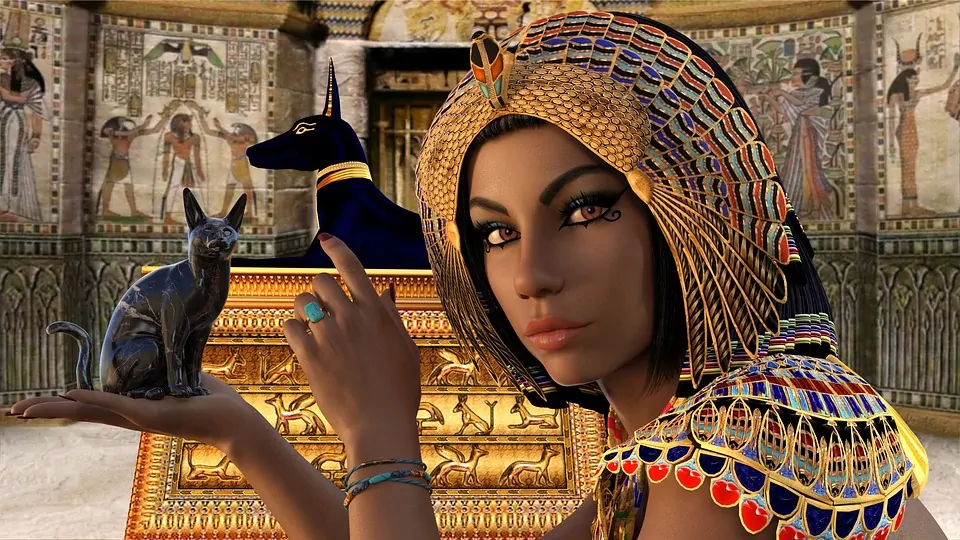
Table of Contents
As Jewelry Shopping Guide editors, we write about things that we love and we think you’ll like too. We often have affiliate partnerships, and may generate some revenue from these links at no cost to you.
No other civilization conjures up as much mystery, allure, and romance as the ancient Egyptians. Jewelry played a big role in ancient Egypt, evident by the stunning accessories that have been found by archaeologists.
From elaborate armbands to intriguing diadems, Egyptian jewelry still captivate us. After all, it was Cleopatra who owned two of the world’s largest pearls, according to Pliny.
That’s all very well and good, but is Egyptian jewelry relevant today?
The short answer is yes. You may not realize it but influences from jewelry designs and materials from that era still exist.
Let’s take a look into Egyptian jewelry, its history, types, materials used, and Egyptian jewelry designs on the market today.
The Role of Jewelry in Ancient Egypt
Most cultures love jewelry, but Egyptians took this to another level. For them, jewelry played a greater role than simply being beautiful accessories they wore. Jewelry represented the wealth and social status of a person. Sadly, this was why slaves did not wear any jewelry as they had neither. The richer you were, the more elaborate and colorful your jewelry was.
Wearing more jewelry signified that the gods were pleased with you and were blessing you. From adults to children, everyone wore jewelry for various reasons. Very young children would not always wear clothes but would wear jewelry.
Certain types of jewelry were believed to protect you in this life and the next. When a person died, they were entombed together with their jewelry, as it was believed that this would help them to be successful in the next life.
Egyptian jewelry was colorful and bright, as they believed some colors would keep you in good health.
Symbolism in Egyptian Jewelry
Because jewelry held meaning for the Egyptians, symbols were carefully chosen to make a statement. Often, there are multiple layers of meanings in Egyptian jewelry.
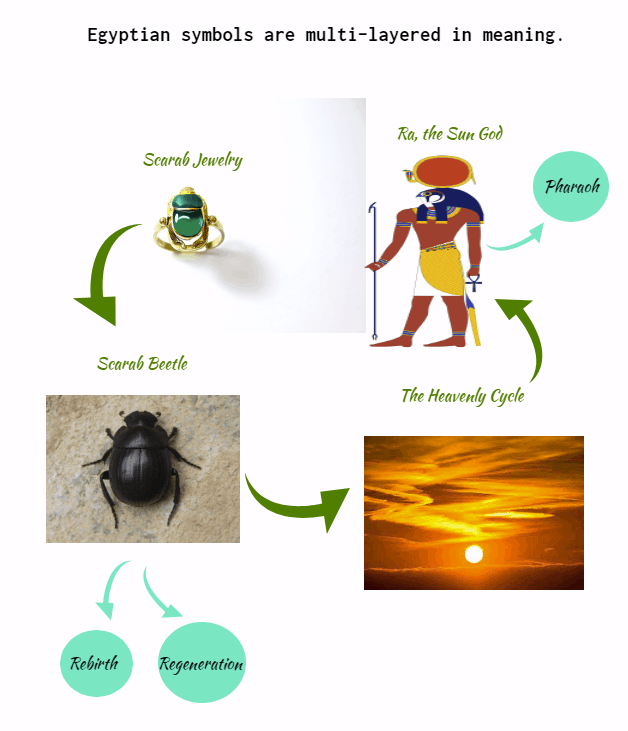
A good example is the scarab beetle which represented the natural world of animals, the sun god, Ra, and the pharaoh who was seen as the manifestation of Ra on earth.
Each piece of jewelry held many meanings so understanding these symbols helps us to understand what the jewelry was about.
Here are some of the most popular symbols used at the time:
1. Ankh Symbol
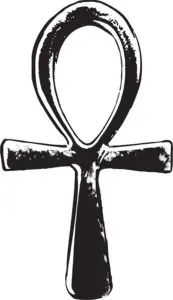
This simple symbol in the shape of a cross was the hieroglyphic used to symbolize the word life and is the most well-known symbol from that time. It was commonly used in writing as well as art and came to represent the concept of eternal life over time. Today, the ankh is commonly worn as pendants or in charms by both men and women and is perfect for boho styles, as featured here in this pendant.
2. Scarab Beetles
If you’ve ever watched The Mummy, you might have developed a phobia of the scarab beetle. But this creature, also known as the dung beetle, symbolized rebirth and fertility for ancient Egyptians.

The scarab beetle was also believed to represent the heavenly cycle. This was because scarab beetles roll balls of dung for food and lay their eggs within these dung balls. The idea is that as soon as the eggs hatch, they would have sufficient food to feed on.
Ancient Egyptians believed that Ra, the sun god, rolled across the sky each day, nourishing and transforming all those he touched. This connection made the scarab beetle highly significant and a common symbol is seen across jewelry, artwork, and writing.
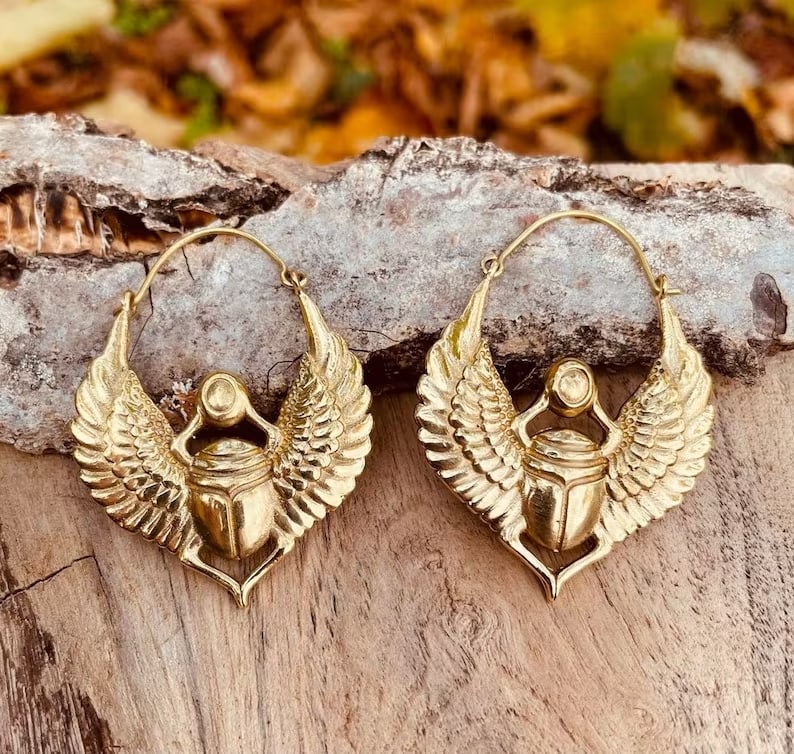
While the scarab isn’t glamorous at all, the jewelry certainly is. The symbol is still popular in vintage and avant-garde designs.
3. Eye of Horus
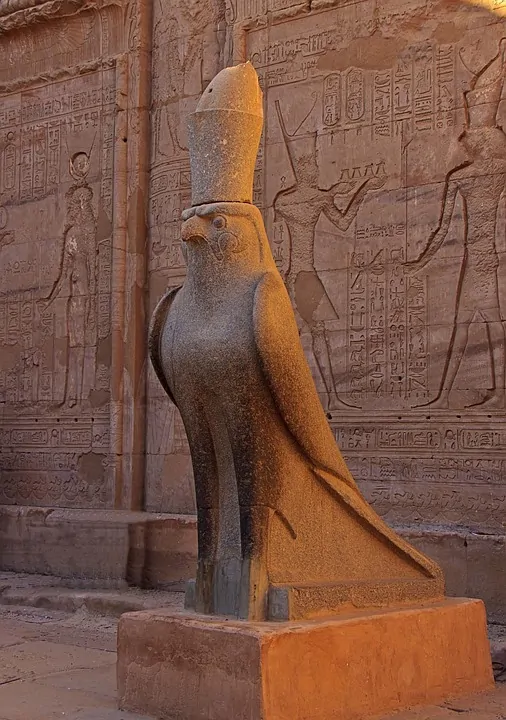
This symbol signified protection, good health, and royal power. Horus was the national deity of Egypt and the symbol of his eye became a central component of ancient Egyptian beliefs.
The eye of Horus was very popular and was somewhat akin to the evil eye symbol. Fishermen painted the Horus eye on their boats and people wore amulets of this symbol.
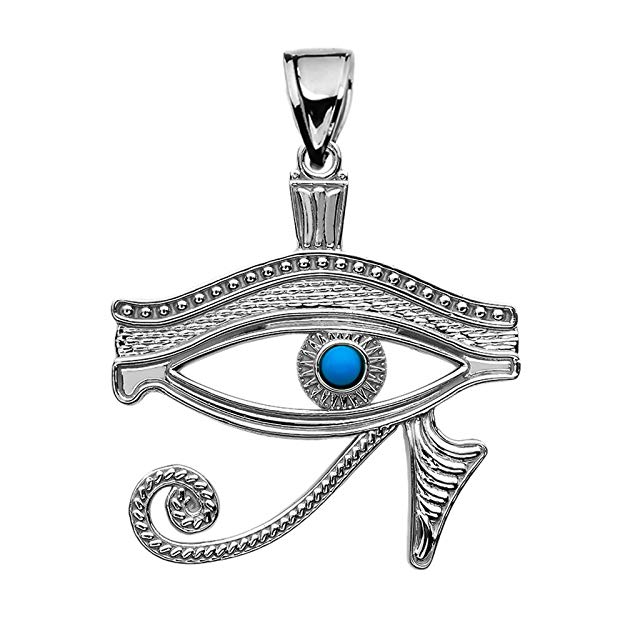
Today, you’ll find many designs featuring the Eye of Horus, with pendants and charms being the most popular.
4. Lotus Symbol
The lotus is a meaningful symbol across the world and in various religions. In Egypt, it was valued as a symbol of creation, rebirth, and fertility. It also symbolized the upper region of the land.
5. Symbolism of Colors
In ancient Egyptian jewelry, colors also held a lot of symbolism. The six basic colors frequently used were white, black, yellow, blue, green, and red.
- Black – This represented death, the underworld, and the unknown while also symbolizing positive aspects of life like birth, life, and resurrection.
- Red – This color symbolized life or a higher being. It could also represent destruction, blood, and flesh
- Blue – This represents life, birth, rebirth, and fertility. It also symbolized protection as well as the Nile River, which in turn had its own symbolism of fertility and nourishment.
- Green – This color represents growth, goodness, fertility, and life. It represented good deeds and productivity.
- Yellow – Yellow symbolized the sun and eternity.
- White – As in most cultures, white in ancient Egypt also represented purity, innocence, cleanliness, and clarity. Egyptian clothes of the time were white and so the color would also represent daily life and routine.
Egyptian Jewelry Materials
The most commonly used metal at the time was gold and copper which were found in abundance.
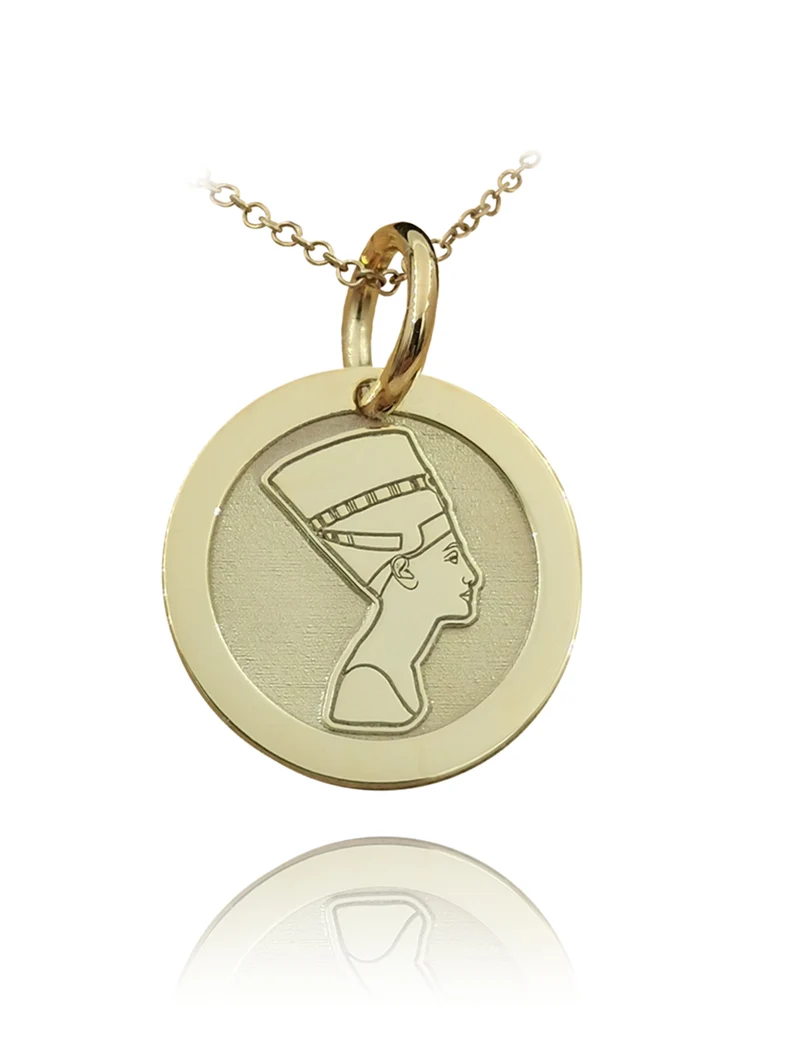
Gold was used in its pure state for jewelry and was valued for its beautiful color and because it didn’t tarnish. It was more expensive and was used by royalty and the nobility.
Copper was a stronger, more durable metal choice for jewelry, and due to its affordability, was used by most people. Silver was not used in ancient Egypt as it wasn’t readily available.
Beads were very popular to embellish jewelry pieces and add color. Glass was commonly used in the making of beads but sometimes clay was also used.
Gemstones were frequently utilized, and these included lapis lazuli, which was among the most valuable gemstones of the time, turquoise, carnelian, onyx, and pearls among others. In terms of value, lapis lazuli and turquoise in ancient Egypt were similar to jade in China. Gemstones were often inlaid into the metal to create intriguing designs. Of course, gemstones were also very valuable and often used only by those of higher status.
Types of Egyptian Jewelry
There are various types of Egyptian jewelry designs to adorn a person from head to toe. Here are some of the most popular types:
1. Wide Metal Collar
The Egyptian collars were very wide and decorated a person’s neck and shoulders. These were commonly made of gold, which was less expensive than silver, as silver was scarce. There were many ways that the neck collar could be designed, from a simple metal ring to elaborate beaded pieces.
Most neck collars were adorned with beads, gemstones, and other elaborate embellishments. Many jewelry designers today are inspired by the Egyptian collar. Here’s a stunning modern example proving that this type of jewelry still has its place in the modern world.
2. Amulets
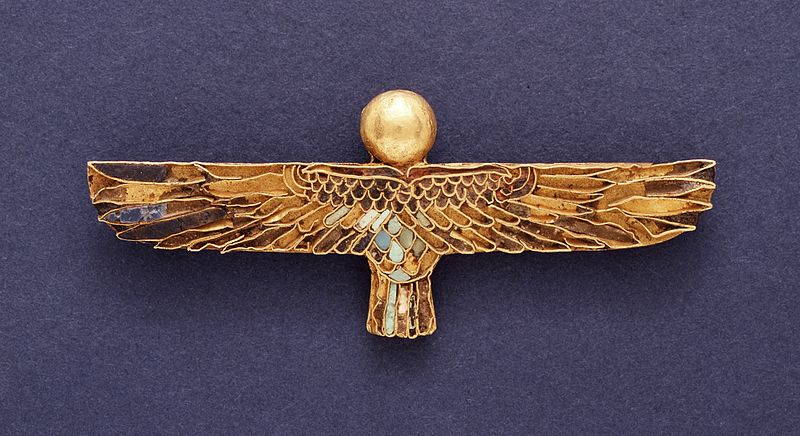
These aren’t jewelry per se, but they were beautiful small items that were carried or fixed to clothing to offer protection and bring in good fortune. Amulets could be fixed to existing jewelry, which added to the beauty of the jewelry while still maintaining the use of the amulet.
Amulets were made of various materials and were often shaped into little human or animal figures, replicas of deities or symbols, and emblems. Today, you’ll find many pendants and charms featuring these traditional Egyptian symbols like this Egyptian scarab pendant.
3. Egyptian Necklaces
Necklaces made of various types of beads were highly popular during ancient Egyptian times. These would be colorful in nature, and made of clay, glass, stone, and sometimes precious stones. Amulets would sometimes be fixed to necklaces to turn them into a protective accessories.
4. Egyptian Bracelets
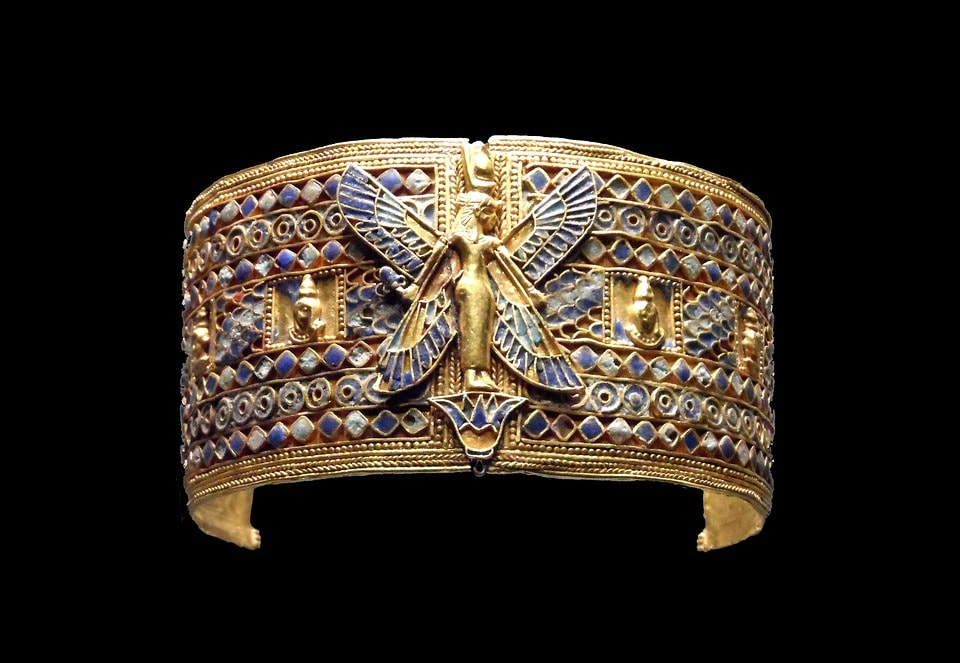
Bracelets were usually in the form of metal cuffs or worn as armbands. Bracelets were frequently made of gold, with glass and gemstone detailing. These pieces would frequently be engraved with emblems or hieroglyphics, adding meaning to them.
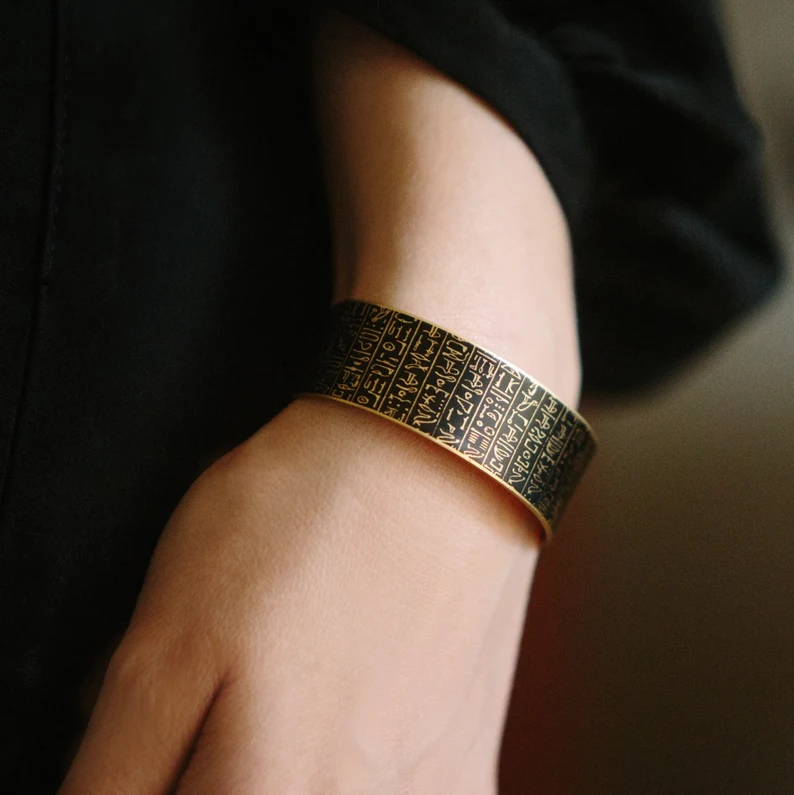
Many stunning armbands and cuffs have been found in royal Egyptian tombs carrying engravings that tell us about particular Pharaohs.
5. Egyptian Pectoral
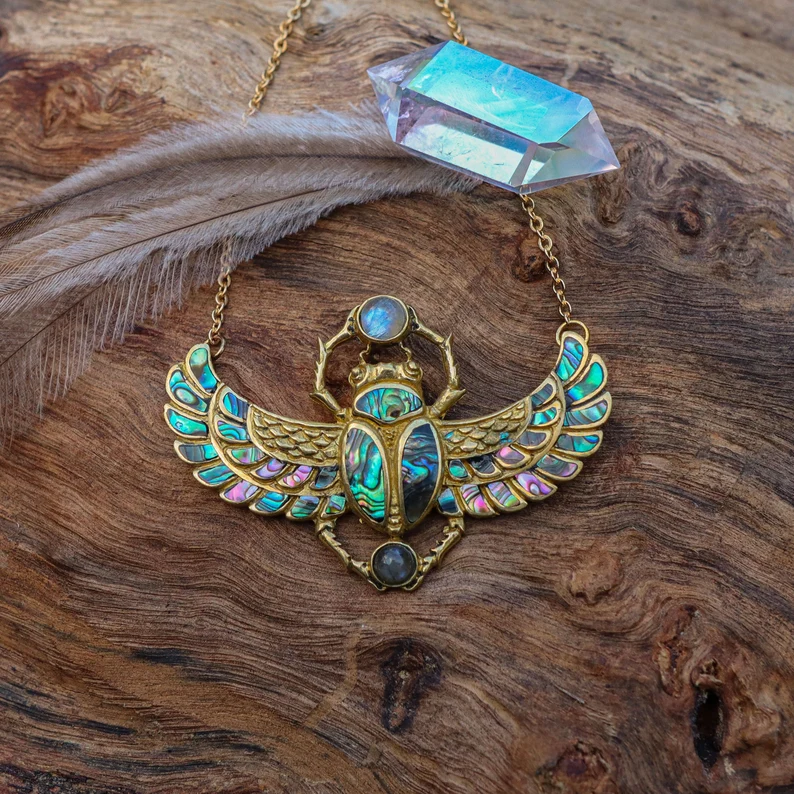
A pectoral was like a large pendant, that hung in the front over the chest of the person. Pectorals were commonly worn by the higher classes, as they were a display of higher status and wealth.
Some common symbols used in pectorals were birds, flowers, scarabs, snakes, and protective symbols with gold and gemstones frequently being used to make the accessory eye-catching.
Where to Buy Egyptian Jewelry
Although genuine ancient jewelry can cost you an arm and a leg (and more!) you can find beautiful modern replicas online that are affordable, beautiful, and stylish. These come in a variety of prices, from a few dollars to thousands of dollars, depending on the quality of craftsmanship, materials used, and brand.
Some of these modern designers have reimagined ancient Egyptian jewelry, stylizing them into stunning jewelry, like this amazing Horus eye pendant.
We recommend starting your search on Etsy and Amazon, where most of the top jewelers who create Egyptian jewelry styles offer their jewelry. You’ll find a range of Egyptian jewelry on both platforms so search through each and compare prices, quality, and types before you buy.









